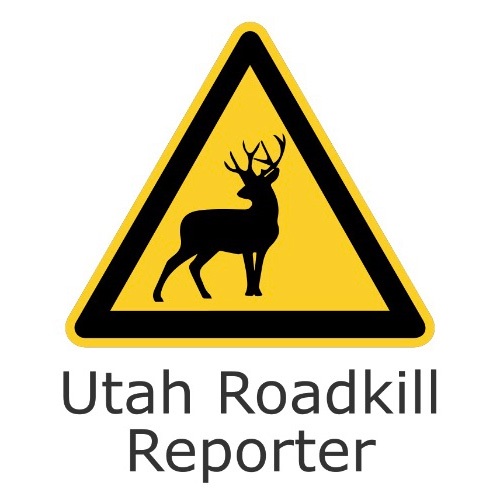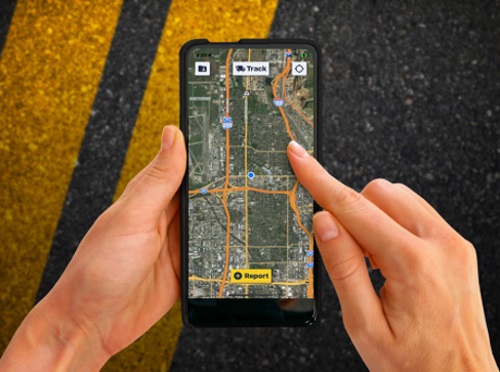The Utah Division of Wildlife Resources (Utah DWR) and Utah Department of Transportation recently introduced a free mobile phone application called “The Roadkill Reporter” to make it easier for motorists to report the location and description of any dead animals on or near roads for removal.
[Above photo by Utah DWR]
Available through both the Google Play store and Apple’s App Store, the new Roadkill Reporter app – developed over the last two years with funding from both state agencies – serves another purpose, as well: Pinpointing where the agencies need to build wildlife crossings on state highways.
“It is important for us to understand how many wildlife-vehicle collisions occur in Utah,” explained Utah DWR Migration Initiative Coordinator Blair Stringham in a statement. “This new app will allow us to know exactly when and where collisions occur, which will help us identify hot spot areas on Utah highways. We can then work with Utah DOT and other partners to install underpasses, fencing, wildlife overpasses, and other structures to reduce collisions in those areas and keep wildlife and people safe.”
Along with providing information about potential areas for wildlife crossings, the data collected through the app will also benefit the Utah Wildlife Migration Initiative and its efforts to learn more about the annual migration patterns of different animal species in Utah.
The Utah Wildlife Migration Initiative is a program that tracks and studies the migration patterns of different wildlife and fish species in the state. Most of the data comes from animals wearing GPS tracking devices or from fish tagged with implanted transmitters. The tracking data benefits wildlife because biologists can identify where the animals spend large portions of time and then make habitat improvements in those areas.

“For years, wildlife carcass data has been a key factor in Utah DOT and Utah DWR’s decision-making process to make Utah roads safer and improve wildlife population health,” noted Utah DOT Natural Resource Manager Matt Howard. “The new app will make it easier for the public to use and will give us more and better information to guide future mitigation efforts.”
The most reported wildlife-vehicle collisions in Utah are with deer and elk. So far, in 2022, there have been 4,900 reported collisions with deer, 166 reported collisions with elk, and 20 reported collisions with moose. However, the actual number of collisions is likely twice as high, because many incidents just go unreported, Utah DWR noted.
Many state departments of transportation have beefed up efforts to address wildlife crossing needs on state roads in recent years.
For example, in August, the Colorado Department of Transportation recently completed the state’s newest wildlife overpass and underpass on U.S. Highway 160 in the southwestern part of the state, celebrating the accomplishment with a ribbon-cutting event.
To date, Colorado DOT said it has built more than 60 wildlife mitigation structures crossing above or under highways throughout the state. Additionally, it has installed 400 miles of high big game fencing along state and U.S. highways or next to the interstates.
Meanwhile, a research document recently released by an international pool-funded study led by the Nevada Department of Transportation provides an “authoritative review” of the most effective measures to reduce animal-vehicle collisions, improve motorist safety, and build safer wildlife crossings.
With as many as two million collisions with large mammals in the United States leading to approximately 200 human deaths every year, the review compiled, evaluated, and synthesized studies, scientific reports, journal articles, technical papers, and other publications from within the United States and beyond to determine the effectiveness of 30 different mitigation measures.
Ultimately, the report provides best management practices to reduce animal-vehicle collisions, increase habitat connectivity, and implement cost-effective solutions.

